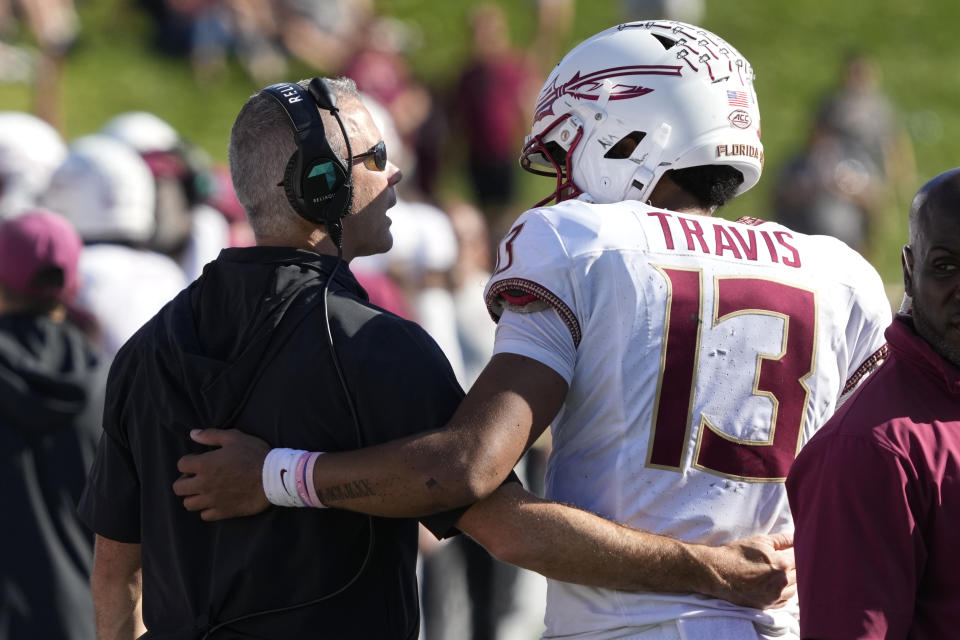ACC releases new football scheduling model to add California, Stanford and SMU in '24
The Atlantic Coast Conference has unveiled a new scheduling model to incorporate new members California, Stanford and SMU for next year, which includes those schools facing each other as annual opponents while staying with a no-division format.
The league announced its reworked scheduling plan Monday evening, which has all 17 football-playing members playing each other at least twice over a seven-season stretch through 2030. The model also protects 16 annual matchups, including multiple long-standing league matchups such as Florida State-Clemson or North Carolina-Virginia.
That includes Cal and Stanford, which have been longtime Pac-12 peers, being paired together, as well as each having annual games with SMU from the American Athletic Conference. But travel miles will pile up: Stanford's first ACC slate includes trips to Clemson, North Carolina State and Syracuse; Cal's schedule includes games at FSU, Pittsburgh and Wake Forest; and SMU visits Duke, Louisville and Virginia.
Specific game dates will come later, with the top two teams set to meet in the ACC title game.
Syracuse athletics director John Wildhack said schools voiced their preferences on how many permanent matchups they wanted to preserve.
“It’s like a game of Jenga, right?” Wildhack said on Monday night’s reveal show on the ACC Network. “One move can trigger like 72 other ramifications, in a sense.”
The move comes after the ACC voted in early September to expand to 18 members in most sports, with Notre Dame remaining a football independent.
Yet the league faced new challenges by growing out of its eastern-seaboard footprint to reach across the country — with a stop in Texas in between — and create more extensive travel demands along with headaches for preserving regional rivalries.
That was easier for some schools than others. There are four ACC schools in the state of North Carolina, with three of those within roughly 30 miles of each other, or preserved matchups between former Big East peers like Boston College, Pittsburgh and Syracuse.
Georgia Tech and Louisville are the only schools that don't have a permanent partner in the model. But the new model restores annual matchups like North Carolina State-Wake Forest and Miami-Virginia Tech that were lost in a previous revamp.
Overall, the league will go from 56 to 68 league games to bolster inventory for TV partner ESPN, while none of the current 14 league teams will travel west to the state of California in consecutive seasons.
In a statement, ACC commissioner Jim Phillips called it “a creative, flexible, and aggressive” model.
The ACC last announced a change to its scheduling model in June 2022, a plan that included the elimination of the two-division format for a single division-free chase for the two spots in the ACC championship game.
That “3-5-5” model went into effect this season, which gave each ACC football member three permanent scheduling partners to play each year. Teams would then face the other 10 teams once every two years; five one year, five the next. It meant every ACC team will play all conference opponents home and away at least once every four years.
That represented a significant departure from the previous scheduling rotation that often had cross-divisional matchups going dormant for years, such as nearby neighbors Duke and N.C. State meeting this year in Durham for the first time since 2013.
But westward expansion made the 3-5-5 plan outdated before the first full weekend of play this season.
___
Get alerts on the latest AP Top 25 poll throughout the season. Sign up here
___
AP college football: https://apnews.com/hub/ap-top-25-college-football-poll and https://apnews.com/hub/college-football




